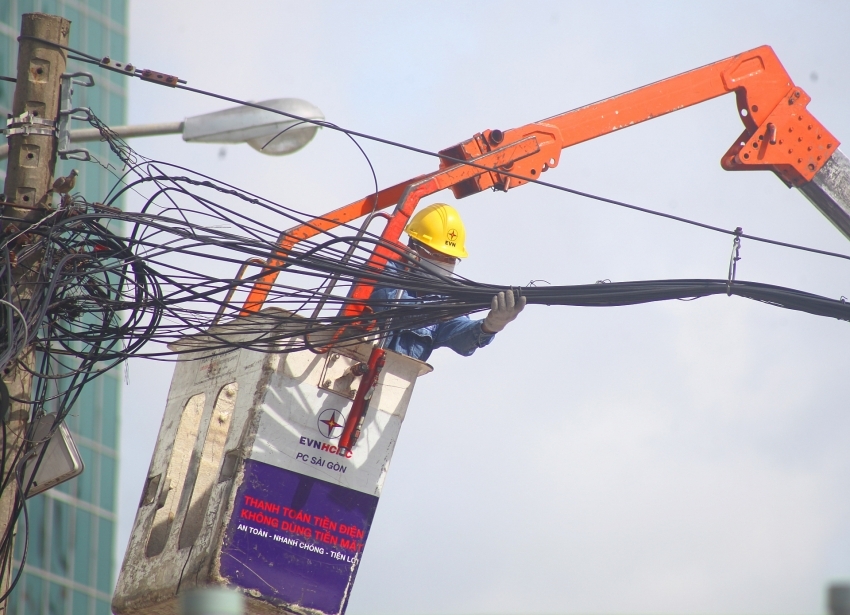 |
|
Despite the swine fever, an increase in gas and electricity costs have pushed the CPI up
|
The General Statistics Office (GSO) reported that the average consumer price index (CPI ) in the first four months of this year increased 2.71 per cent on-year. This is the lowest average four-month CPI ascension as compared to the same period last year (2.8 per cent), and in 2017 (4.8 per cent).
“The increase in the prices of petrol and electricity was the key driver in the climb of the CPI in the first four months of 2019,” said GSO’s head Nguyen Bich Lam.
Specifically, in April the retail price of bio-fuel E5 RON 92 jumped VND1,115 to VND19,703 ($0.85) per litre, and that of RON95 increased to VND21,235 ($0.923), up VND1,484.
The prices of diesel and kerosene went up by VND297 and VND291 to VND17,384 (0.755) and VND16,262 ($0.7) per litre, respectively. Meanwhile, the price of mazut was capped at VND15,617 ($0.68) per kilogramme, up VND1,127.
In April alone, petrol retail prices rose by VND3,000 ($0.13) per litre after two continuous hikes.
Lam said that in March the average price of electricity went up 8.36 per cent under the Ministry of Industry and Trade’s Decision No.648/QD-BCT, leading to an on-month 1.85 per cent hike in household-oriented electricity, a 1.42 per cent increase in the petrol price, and a 0.98 per cent rise in the materials for repairing houses.
However according to the GSO, the four-month CPI has been prevented from a bigger rise due to the appearance of African swine fever since March, affecting the consumption of pork, which occupies about 60 per cent of Vietnamese households’ foodstuff consumption.
“In April, the price of pork dropped 3.07 per cent on-month due to consumer worries regarding African swine fever, and shifting to using other types of foodstuffs,” Lam said.
Just like all other companies operating in the pork value chain in Vietnam, the US-backed Cargill Vietnam is now dealing with the fever, which is said will last long and has had a negative impact on all players’ performance not only in Vietnam, but also in other nations hit by the disease.
Production and sales volume of feed and pork companies in Vietnam have decreased since March because the swine population in impacted areas is shrinking while farmers are reluctant or even not allowed to repopulate their farms amidst the disease, according to a Cargill Vietnam source.
The success of the four-month CPI was cited by the GSO to also derive from the State Bank of Vietnam’s (SBV) flexible monetary policy, which since the start of the year has helped stabilise the value of the dong and the VND/USD exchange rate.
Deputy Prime Minister Vuong Dinh Hue has ordered the SBV to continue the policy in close combination with the fiscal policy in order to keep an inflation rate of between 3.3 and 3.9 per cent this year. The SBV has also been asked to control all monetary supplies and credit both in structure and quality, and to take all necessary solutions to continue stabilising the VND/USD exchange rate and lending rates at banks.
After recently working with the Vietnamese government, Alex Mourmouras, division chief in the International Monetary Fund’s Asia and Pacific Department, said, “Vietnam’s plans to modernise the monetary policy framework, including greater exchange rate flexibility to make the currency a better absorber of external shocks, are welcome. Gradual reserve accumulation should continue. To safeguard monetary and financial stability, the system of macroprudential regulations should be strengthened.” VIR
 The African swine fever was named as one of the factors behind the slow rise of the CPI so far in 2019, despite the government’s flexible monetary policy and an increase in gas and electricity costs.
The African swine fever was named as one of the factors behind the slow rise of the CPI so far in 2019, despite the government’s flexible monetary policy and an increase in gas and electricity costs.